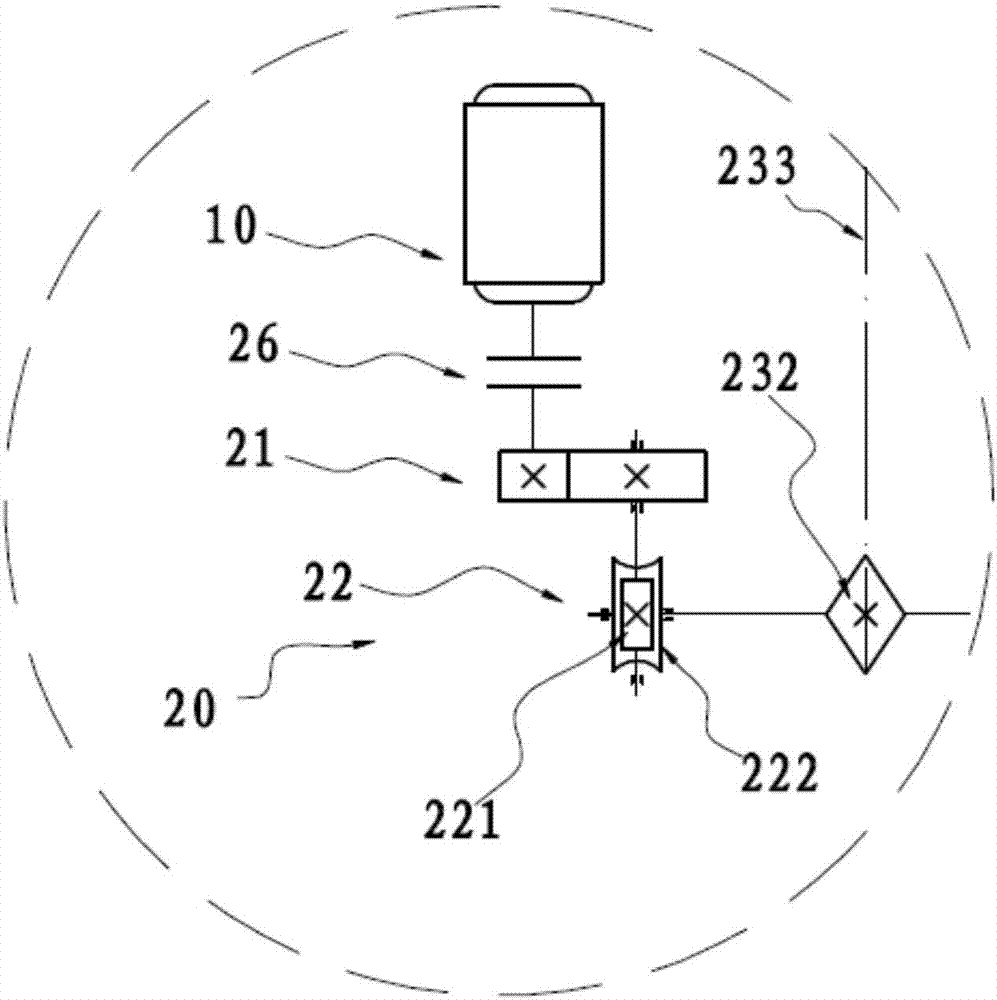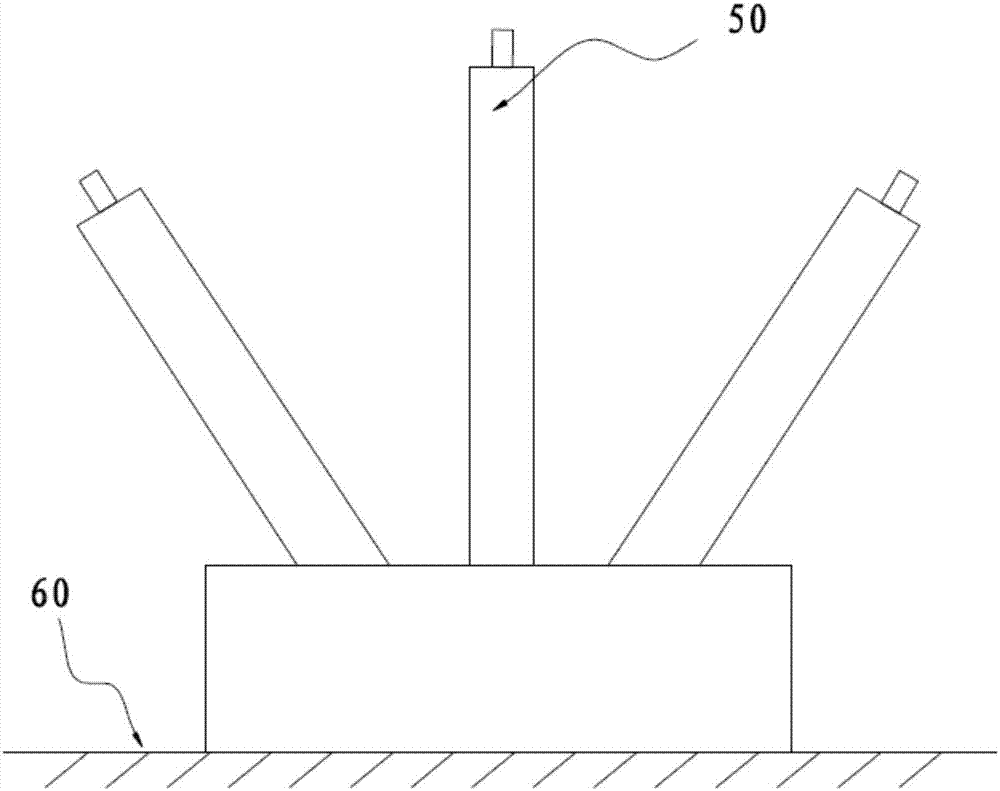Solar following system and control method
A control method and solar energy technology, applied in the field of solar energy follower system and control, can solve problems such as low conversion rate, and achieve the effect of solving low conversion rate
- Summary
- Abstract
- Description
- Claims
- Application Information
AI Technical Summary
Problems solved by technology
Method used
Image
Examples
Embodiment approach 1
[0031] Such as figure 1A solar energy following system shown includes: a driving device 10, a transmission device 20, a collecting device 30, a first detecting device 40, a second detecting device 50 and a control device (not shown in the figure), and the driving device 10 The transmission device 20 is connected to the collection device 30, the control device controls the rotation of the drive device 10 so that the collection device 30 rotates, the first detection device 40 is arranged on the collection device 30, and the second detection device 50 is at least two The first detection device 40 and the second detection device 50 are both electrically connected to the control device. Turn on the solar energy following system. When the system initially runs, the control device drives the transmission device 20 by controlling the drive device 10, thereby controlling the collection device 30 connected to the transmission device 20 to automatically rotate. When the first detection d...
Embodiment approach 2
[0054] Such as Figure 4 As shown, the structure and principle of this embodiment are similar to Embodiment 1, the difference is that there are at least two first detection devices 40 in this embodiment, and the two first detection devices 40 are respectively arranged in the collection device 30 on both sides parallel to the first rotating shaft 24, when the light sources received by the two first detection devices 40 on both sides are balanced, it is the best position of the collection device 30, at this time the first detection device 40 sends The signal is sent to the control device, and the collecting device 30 is controlled to stop rotating.
Embodiment approach 3
[0056] The structure and principle of this embodiment are similar to Embodiment 1, the difference is that there are three first detection devices 40 in this embodiment, which are respectively arranged on the first detection device 40 and respectively arranged on the collection device 30 and the first detection device 40 respectively. The two sides parallel to the rotating shaft 24 and the middle position of the collection device 30, when the light intensity data received by the second detection device 50 located on both sides are greater than the light intensity data received by the second detection device 50 at the middle position, then control The forward and reverse motors rotate accordingly until the light source received by the second detection device 50 located on both sides and the second detection device 50 located in the middle is balanced, and the collecting device stops rotating.
PUM
 Login to View More
Login to View More Abstract
Description
Claims
Application Information
 Login to View More
Login to View More - R&D
- Intellectual Property
- Life Sciences
- Materials
- Tech Scout
- Unparalleled Data Quality
- Higher Quality Content
- 60% Fewer Hallucinations
Browse by: Latest US Patents, China's latest patents, Technical Efficacy Thesaurus, Application Domain, Technology Topic, Popular Technical Reports.
© 2025 PatSnap. All rights reserved.Legal|Privacy policy|Modern Slavery Act Transparency Statement|Sitemap|About US| Contact US: help@patsnap.com



